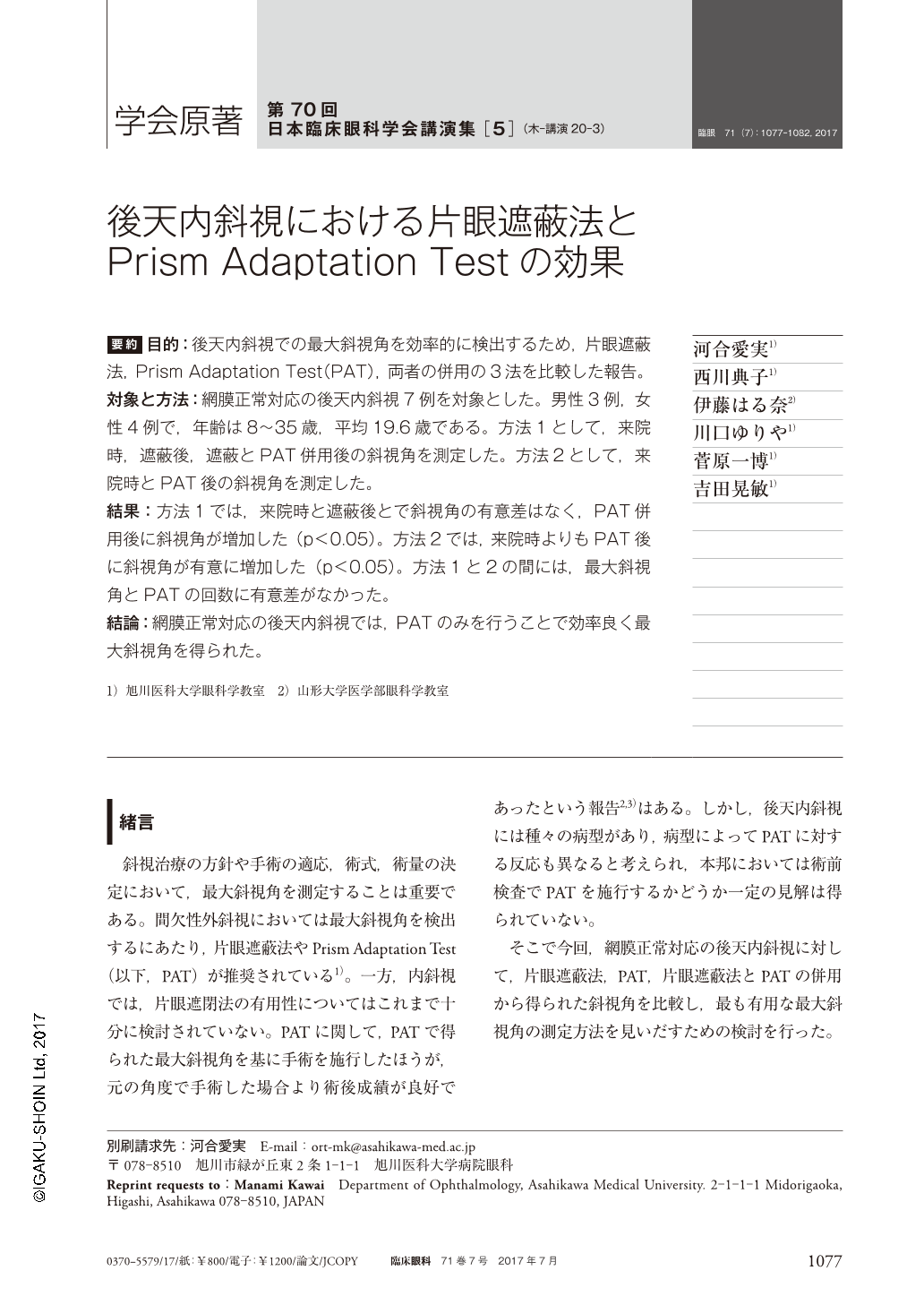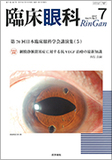Japanese
English
- 有料閲覧
- Abstract 文献概要
- 1ページ目 Look Inside
- 参考文献 Reference
要約 目的:後天内斜視での最大斜視角を効率的に検出するため,片眼遮蔽法,Prism Adaptation Test(PAT),両者の併用の3法を比較した報告。
対象と方法:網膜正常対応の後天内斜視7例を対象とした。男性3例,女性4例で,年齢は8〜35歳,平均19.6歳である。方法1として,来院時,遮蔽後,遮蔽とPAT併用後の斜視角を測定した。方法2として,来院時とPAT後の斜視角を測定した。
結果:方法1では,来院時と遮蔽後とで斜視角の有意差はなく,PAT併用後に斜視角が増加した(p<0.05)。方法2では,来院時よりもPAT後に斜視角が有意に増加した(p<0.05)。方法1と2の間には,最大斜視角とPATの回数に有意差がなかった。
結論:網膜正常対応の後天内斜視では,PATのみを行うことで効率良く最大斜視角を得られた。
Abstract Purpose:To evaluate monocular occlusion and prism adaptation test as clinical methods to determine the maximum angle of deviation in acquired esotropia.
Cases and Method:This study was made on 7 patients with acquired esotropia. The series comprised 3 males and 4 females. The age ranged from 8 to 35 years, average 19.6 years. Angle of deviation was measured at the initial examination, after 40 minutes of monocular occlusion, and prism adaptation test combined with monocular occlusion(Method 1). Angle of deviation was measured by prism adaptation test only on another occasion(Method 2).
Results:There was no difference in the angle of deviation between initial examination and occlusion. Angle of deviation increased when prism adaptation test was also conducted(p<0.05). Measured angle of deviation showed an increase when prism adaptation test was performed alone at another occasion(p<0.05). There was no difference in the maximum angle of deviation and frequency of prism adaptation test between Method 1 and Method 2.
Conclusion:Maximum angle of deviation could be effectively measured by prism adaptation test alone in cases of acquired esotropia with normal retinal correspondence.

Copyright © 2017, Igaku-Shoin Ltd. All rights reserved.


